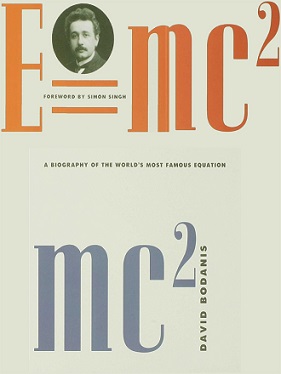|
home | what's new | other sites | contact | about |
|||
|
Word Gems exploring self-realization, sacred personhood, and full humanity
Einstein
return to "Einstein" main-page
David Bodanis' excellent book, E=mc2
In the poisonous party-factionalism of the French Revolution, Lavoisier lost his head to the guillotine (1793). His high-profile work as a hated tax-collector didn’t help his case. However, he might have survived this loss of reputation, and life, had he not been guilty of one famous crime: At his suggestion, a massive wall had been built around Paris allowing the tax-collectors to adroitly pick one’s pocket, coming and going. This truly became a big selling point for the unforgiving mob that wanted Lavoisier’s King-loving head. Science historians suggest that Lavoisier may have conceived of the idea of Paris as an enclosed fortress from the many experiments of the French chemist. In order to get a good reading of the mass of rusting metal one needs an air-tight bottle. He may have seen Paris as an air-tight bottle.
the two domains, energy and matter But let’s extend this analogy. Prior to Einstein, the realms of energy and matter were viewed as separate air-tight bottles, with no linkage or crossing over. David Bodanis offers a great insight into Einstein’s problem-solving labor. Consider this: Lavoisier’s work had offered significant clues regarding what would come to be called the “conservation of matter.” He did this by accurately weighing various forms of matter which had been hammered, shredded, burned, blown to bits, and yet, when put to the scale, it was all there, every particle, albeit, combined or recombined, now wearing a new mask. Faraday had done the same for energy. He asserted that magnetism can change form, into electricity, and electricity can become magnetism. Again, a "conservation of energy." Now, here’s where it gets interesting. Einstein said that energy is a form of matter, and matter is a form of energy. But how to offer evidence? Would it not make sense to follow the lead of the greats of the past, Lavoisier and Faraday, and prove one’s point by accurately weighing and measuring as they did? What could be more reasonable and seemingly assured of success? one of the great counter-intuitive, non-sequential insights of all history David Bodanis: “It is common to think of science as building up gradually from what came before… the incremental approach does not work with deep problems "But this incremental approach does not work with deep problems. "Einstein did find that there was a link between the two domains [energy and matter], but he didn’t do it by looking at experiments with weighing mass and seeing if somehow a little bit was not accounted for, and might have slipped over to become energy. "Instead, he took what seems to be an immensely roundabout path. He seemed to abandon mass and energy entirely, and began to focus on what appeared to be an unrelated topic. "He began to look at the speed of light.”
|
|||
|
|

